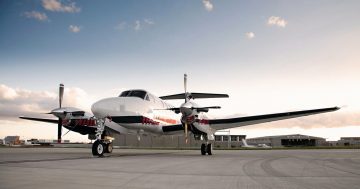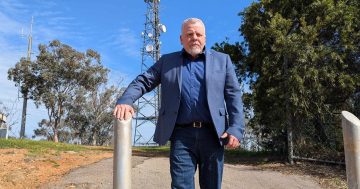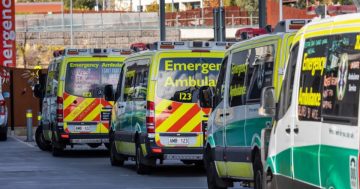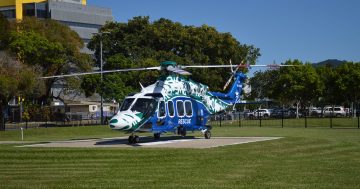James Fernyhough* says a new survey has found half of all Australians are drastically underestimating how much a medical emergency will cost them.
 A new study by comparison site comparethemarket.com.au finds Australia’s States and Territories have failed to communicate the cost of riding in an ambulance, with the result that half of Australians are drastically underestimating how much a medical emergency will cost them.
A new study by comparison site comparethemarket.com.au finds Australia’s States and Territories have failed to communicate the cost of riding in an ambulance, with the result that half of Australians are drastically underestimating how much a medical emergency will cost them.
The study found 49 per cent of Australians believe an ambulance journey costs less than $300, when in reality the average ride in an ambulance costs almost $1,000.
Twenty-five per cent of Australians, meanwhile, think an ambulance ride is free in an emergency.
In most cases, this is wrong.
Medicare does not cover ambulance fees, meaning it’s up to State Governments to decide whether or not to subsidise their ambulance services.
Only in Queensland and Tasmania are ambulance journeys paid for in full by the State.
In every other State and Territory you have to foot the bill, regardless of whether or not it’s an emergency.
The exact cost differs from State to State, meaning Australians who travel or move interstate are particularly vulnerable to being caught out.
A Queenslander who has grown up expecting ambulance rides to be free, for example, might move to Melbourne and assume the same is true there.
This would be a big mistake, as an ambulance ride in metropolitan Victoria costs $1,204.
If you want to protect yourself against big ambulance fees, you have two choices.
You can get specific ambulance cover from your State ambulance service, which usually comes in at between $50 and $200 a year; or you can get private health insurance that includes ambulance cover.
In most but not all States, pensioners and people on unemployment benefits do not have to pay ambulance fees.
South Australia and Western Australia are notable exceptions.
New South Wales
In NSW the flat fee for an emergency ambulance callout is $372 plus $3.35 per kilometre.
For a non-emergency, the call-out fee is less — $290 plus $1.81 per km.
For long journeys for both emergencies and non-emergencies, the maximum charge is a massive $6,095.
If you’re a resident of Queensland or South Australia who is travelling in NSW, you will be charged more than other people because your State has no reciprocal agreement with NSW.
You’ll have to pay about twice as much as everyone else.
Pensioners and people with healthcare cards are exempt from any ambulance fees, as are victims of sexual assault, domestic violence or child abuse, people being involuntarily committed to a mental health facility, and children and young people under the care of the state.
The NSW Government doesn’t offer ambulance cover, so you’ll have to get it from a private health insurer.
Victoria
Victoria’s system is much simpler.
If you live in a metropolitan area you will be charged a flat fee of $1,204 for an emergency, or $325 for a non-emergency.
If you live in a rural area, you will be charged $1,776 for an emergency and $549 for a non-emergency.
There is no extra charge per kilometres travelled.
The same exemptions apply in Victoria as NSW.
Ambulance cover through Ambulance Victoria costs $92.05 a year for a family or $46 for a single person.
South Australia
The base fee for an emergency callout in South Australia is $955, while a non-emergency callout is $213.
On top of this patients have to pay $5.50 per km.
There’s no apparent cap on this, meaning if you live in a remote area your bill could be particularly high.
SA Ambulance Service cover for a family costs $161, or $191 if you want to include interstate cover.
For a single person, standard cover costs $81 a year, while interstate cover costs $96.
Pensioners and Health Care Concession Card holders are NOT exempt from ambulance fees.
Western Australia
In WA the ambulance service is provided by St John Ambulance.
An emergency callout costs $949, and a non-emergency callout costs $510.
There is apparently no charge per kilometre.
St John Ambulance is a private, not-for-profit organisation, and does not offer ambulance cover like other States.
That means if you live in WA and want ambulance cover, you need to get it through a private health insurer.
People on the aged pension are entitled to free ambulance travel.
Everyone else must pay or get private insurance.
Northern Territory
St John Ambulance also provides the ambulance service for the Northern Territory, but under a very different price structure.
An emergency callout costs $790 plus $5.10 per km after the first 10 km.
A non-emergency callout costs $360 plus $5.10 per km after the first 10 km.
Unlike the WA branch, St John Ambulance in the NT does let you take out ambulance cover.
For a family, it costs $125 for a year, $231 for two years and $325 for three years.
For a single person, it costs $106 for one year, $175 for two years and $231 for three years.
Pensioners and Health Care Concession Card holders pay no fees.
ACT
An emergency callout in the ACT costs $936 plus $12 for every km travelled outside the ACT.
A non-emergency callout costs $669 plus $12 for every km travelled outside the ACT.
The ACT Government doesn’t offer ambulance cover, so you’ll have to get it through a private health insurer.
Pensioners and Health Care Concession Card holders pay no fees.
Queensland and Tasmania
The State Governments in both Queensland and Tasmania cover the full cost of ambulance services for State residents.
The reciprocal arrangements between States differ from case to case.
Every State has a different agreement with every other State, so if you’re travelling interstate it’s best to contact either your home State or the State to which you’re travelling to find out the arrangement.
* James Fernyhough is a Melbourne financial journalist and Editor of The New Daily’s money section. He tweets at @JamesFernyhough.
This article first appeared at thenewdaily.com.au.











